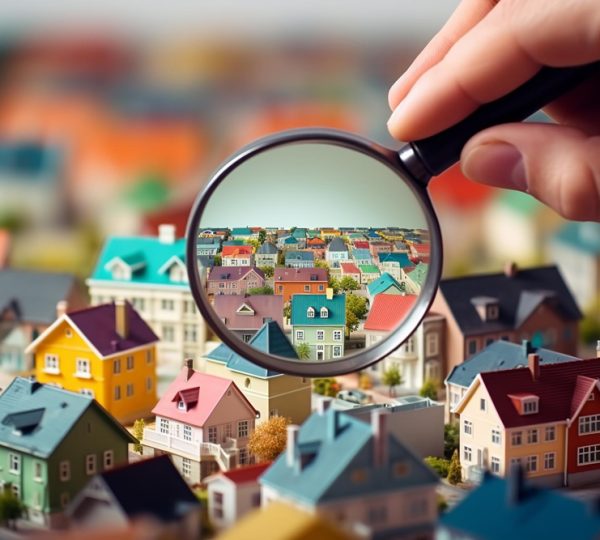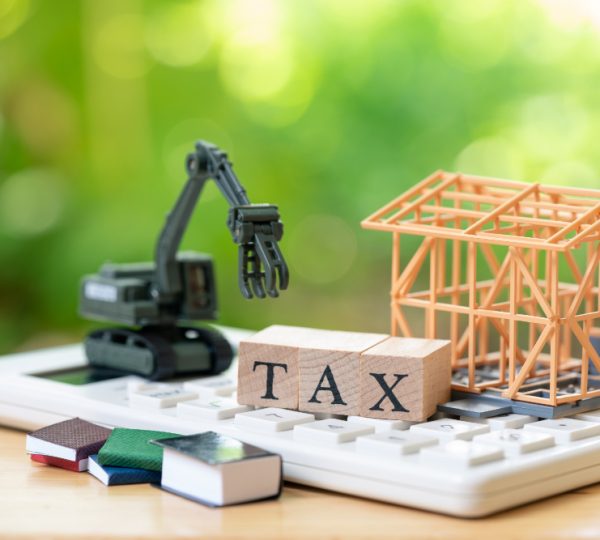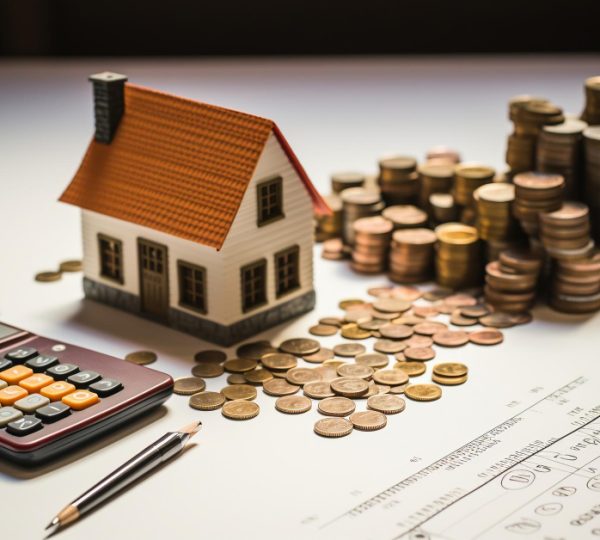How To Know If You Are Affordable For A New House?
It’s alluring to join the housing market craze But ensure you do the mathematics first, given the rising costs and mortgage rates. Since high inflation frequently translates into high worry, many Americans are attempting to fix the price of one of the most fundamental needs: a home, However, many buyers may be enticed to rush in before they’re ready — or because they think the situation will only grow worse — because property prices are already at stratospheric levels and mortgage interest rates are skyrocketing According to Simon Blanchard, an associate professor at Georgetown University’s McDonough School of Business who specializes in consumer financial decision-making, “there is this psychological burden of everything being unknown.” He claimed that an essential need like shelter might seem more tangible.

Focusing on the moment and securing this portion of the budget “may sound reassuring,” he added. However, the risk is that you might open yourself up to vulnerability by saving too little flexibility for later. For example, the National Association of Realtors reported that the national median price of existing houses was $375,300 in March, up 15% from $326,300 a year earlier. In addition, according to Freddie Mac, rates on fixed mortgage mortgages increased from 2.98 percent a year ago to 5.10 percent for the week that concluded Thursday.
That has significantly reduced the amount prospective purchasers may afford: Considering both increased prices and rates, the typical mortgage payment for a property in the median is currently $1,834, up 49% from $1,235 a year ago. Moreover, other non-negotiable costs such as property taxes, homeowner’s insurance, and mortgage insurance—often necessary for down payments of less than 20%—are omitted. With prices for almost everything rising and inflation at a 40-year high, it’s simple to fall victim to the irrationality that leads some purchasers to aggressively bid up prices and forego necessary measures like a house inspection.
Jake Northrup, a financial advisor in Bristol, Rhode Island, for young families, claimed that there is currently a scarcity mindset. Before purchasing their own property, he said that he and his wife had opted to wait a year and save more money.
While some potential buyers are following suit and mortgage applications have recently decreased, the market is still highly competitive due to the chronically low number of properties available in the nation. That can result in incorrect assumptions and poor judgment, So before you start attending open houses, it’s essential to consider not only your financial capabilities but also your financial priorities and probable future expenses, Knowing what you can afford and how various pricing points might impact your capacity to save and spend elsewhere is helpful before you start looking through listings Some financial professionals advise going backward: For retirement, education savings, and other goals, assume a minimum savings rate of, say, 15 or 20 percent On a spreadsheet, including any other regular bills and costs as well Then experiment with different property prices to see how they might affect the rest of the situation.
The financial consultant, Mr. Northrup, stated that the appropriate mortgage amount is not what you are preapproved for but rather what you can pay. “Not fully knowing how other parts of their finances would be impacted when they buy a property is the No. 1 error I see individuals make.” What can you afford? The response will change depending on the home, income, family size, and other aspects.
As a result of the 1920s adage “a week’s salary for a month’s rent,” government housing officials have long seen spending more than 30 percent of total income on housing as oppressive Low-income households were eventually required to pay no more than a third of their income for public housing, a cap that was raised to 30 percent in 1981 This requirement became a part of the nation’s housing policy Some financial advisors could start from a similar general place: Spend no more than 28 percent of your gross income on all housing-related costs, including mortgage payments, insurance premiums, and property taxes, plus an additional 1 to 2 percent set aside for upkeep and repairs.
However, not everyone will find that practical, particularly in expensive urban regions where it might be challenging to locate accommodations that fit those limitations. To determine how much you want to invest toward housing, consider all of your monthly costs, advised Tom Blower, a senior financial advisor at Fiduciary Financial Advisors “I never advise my clients to rigidly stick to a proportion of their income when deciding how much they will spend each month Guidelines and things to think about, but not absolutes, are rules of thumb.
You should adjust your goals.
Many consumers have had to significantly reduce their pricing ranges due to the increase in interest rates. When the interest rate was 3 percent, a family making $125,000 who wanted to put down 20 percent and spend no more than 28 percent of their gross income on housing — or around $35,000 — could easily afford a $465,000 property. As per Eric Roberge, a financial advisor and the owner of Boston’s Beyond Your Hammock, at 5 percent, the sum drops to $405,000. He took maintenance costs, insurance, and property taxes into account.
He usually advises dedicating a modest portion of household income to housing, not to exceed roughly 23 percent, but admitted that this is challenging in many locations. Mr. Roberge stated, “Our affordability estimate doesn’t alter, But the significant increase in prices varies what is genuinely affordable. There are further factors. It would help if you also considered how much more it will cost to maintain and furnish that property, for example, or how much more you’ll need to spend on transportation, as many Americans are relocating from cities to more incredible places in the suburbs.
Beware of hidden expenditures and fixer-uppers.
Experts said that people looking to save some money are drawn to properties in less-than-ideal conditions, but supply chain concerns and other problems are making it more difficult. According to Melissa Walsh, a financial adviser and the owner of Clarity Financial Design in Sarasota, Florida, “I have customers who have lately tried to somewhat dodge the affordability issue by acquiring properties that require considerable modifications.” These clients are learning that buying a fixer-upper may not be as affordable as a few years ago since contractors are hard to locate and material prices have been rising quickly. Instead, she advises laying aside a sum of money because two of her clients this year spent more than twice as much on repairs as they had anticipated.
Be cautious while dealing with an adjustable-rate mortgage.
Adjustable-rate mortgages typically have lower rates than fixed-rate mortgages for a certain amount of time, sometimes three or five years. After that, they reset to the current rate and then alter it periodically, often once a year. For example, according to Freddie Mac, the typical interest rate on a 5/1 adjustable-rate mortgage, fixed for the first five years and changes every year after that, was 3.78 % for the week that ended on Thursday. Last year, it was 2.64 percent.
More buyers are considering adjustable-rate mortgages: For the week ending April 22, they made up more than 9% of all mortgage applications, which was the highest percentage since 2019, according to the Mortgage Bankers Association. They’re not, however, for everybody. The average borrower, according to Kevin Iverson, president of Reed Mortgage in Denver, “is someone who does not anticipate remaining in the property for a long period.” It can be a good loan if you know you’ll sell before your mortgage rate increases, But it’s impossible to predict what the rate will look like in five years. The abrupt rise in rates during the 2008 financial crisis drove many borrowers to the brink (even though A.R.M.s now are typically safer than the products offered at the time).
Keep in mind everything else.
In the short term, the cost of just purchasing a home could seem the most excruciating, but other future charges may prove equally challenging. In recent research, economists at Fannie Mae examined expenditures generally spent across a seven-year homeownership life cycle and discovered that almost everything other than the mortgage is a significant contribution. According to the researchers, additional recurring costs like utilities, property taxes, and home upgrades account for almost half of a borrower’s spending, while transaction costs make up 20%.
They utilized loan data from 2020, where the typical first-time buyer was 36 years old, had $7,453 per month in salary, and paid an 11 percent deposit on a $291,139 house. Over those seven years, the actual mortgage contributes around 30% of the overall expenditures, excluding principle loan payments. The critical lesson they learned was that while borrowing made up a significant portion of house ownership costs, utilities, property taxes, maintenance, and one-time expenses for buying and selling homes sometimes outweighed this cost.



